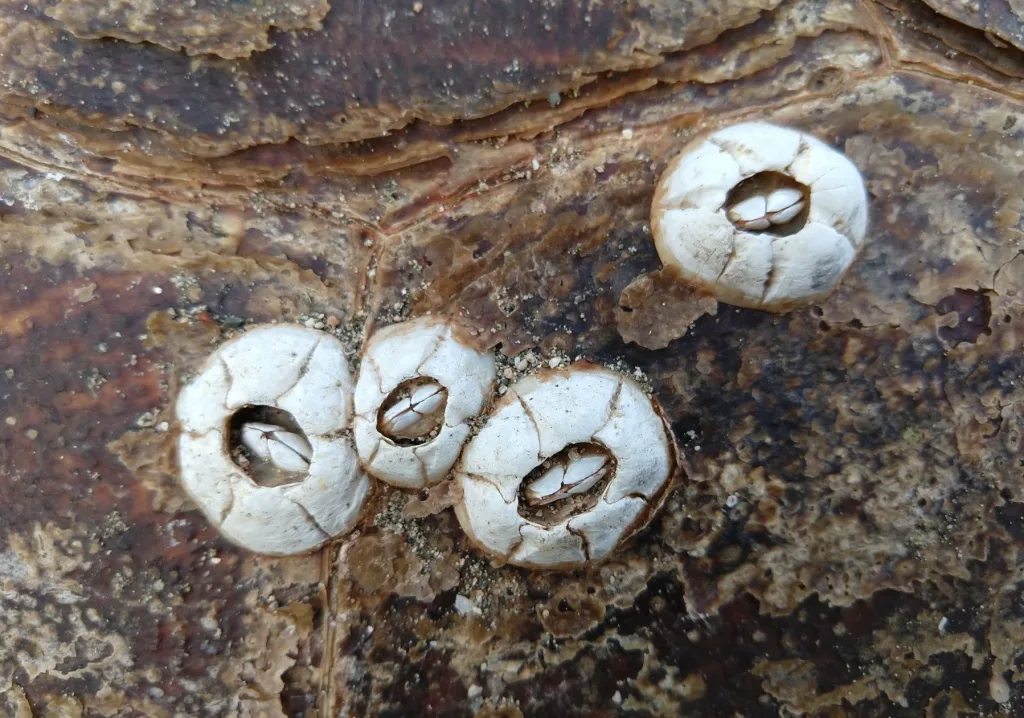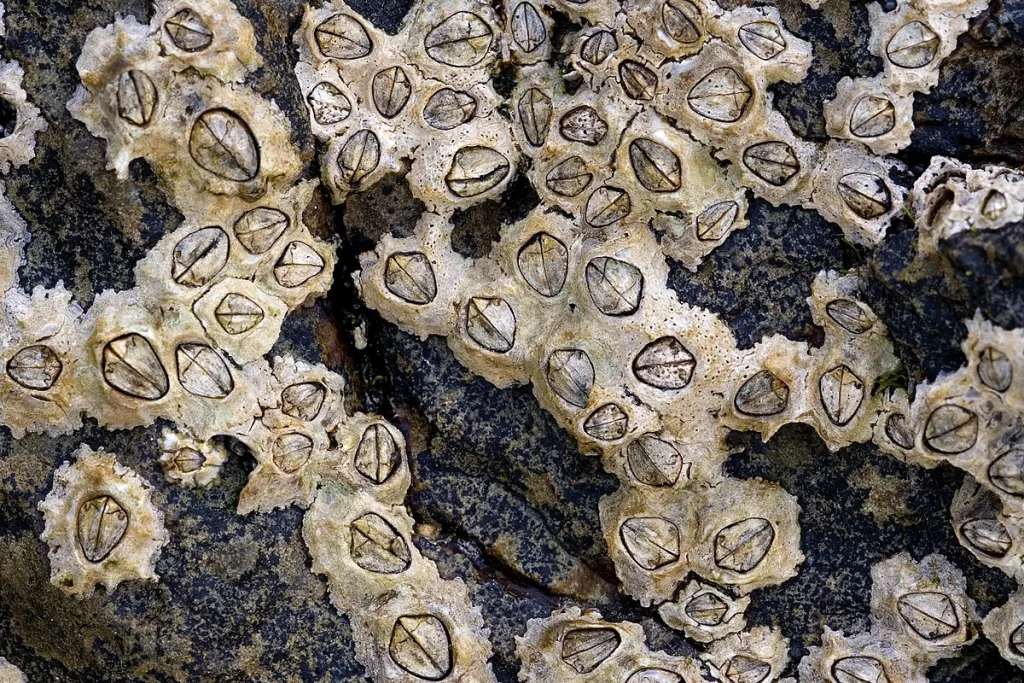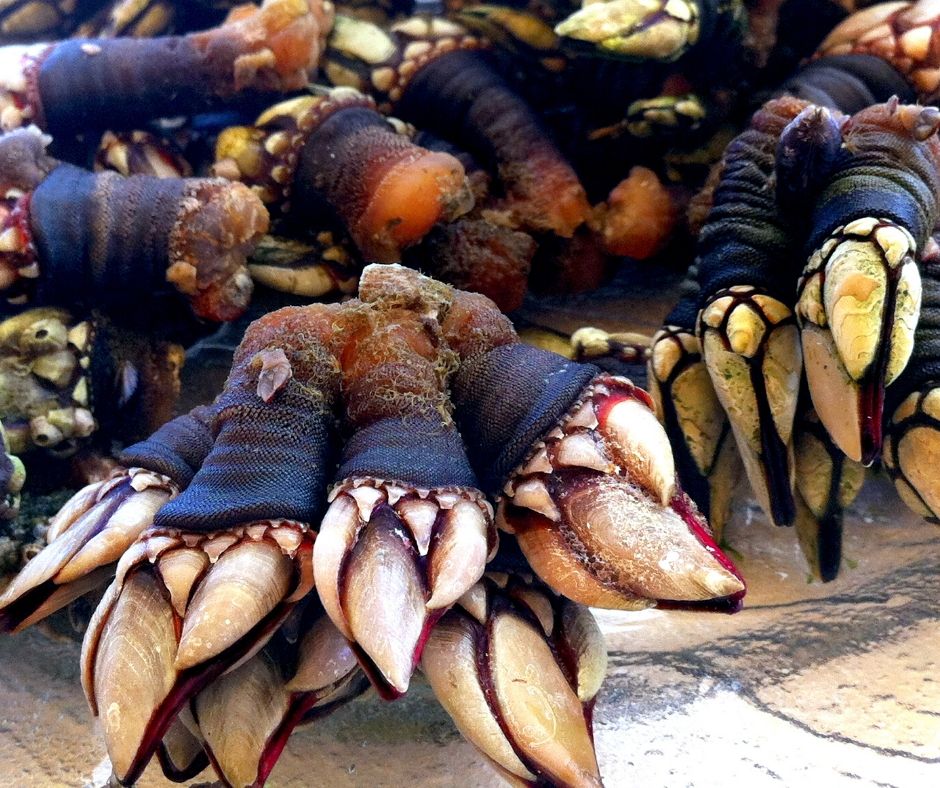If you’re looking for a unique seafood experience, why not try barnacles? Barnacles are a type of crustacean that attach to surfaces such as rocks and boats, living in their own shell-like structures. While they may look strange, they can be an interesting and surprisingly delicious addition to your plate.
Gooseneck barnacles, or percebes, are among the most popular edible varieties of barnacle. These barnacles have a chewy texture and an intense seaside flavor. The rock barnacle, or picoroco, is another popular edible variety that tastes like crab or scallops. In some cultures, these two types of barnacle can be found in grocery stores or markets ready to be cooked and enjoyed!
Barnacles are high in iodine, which is important for our metabolism and helps our bodies process carbohydrates. Eating barnacles can also help strengthen skin, hair, and nails. In addition to being delicious and healthy treats, barnacles also provide other benefits to the ocean environment. As filter feeders, they help remove plankton from the water column which helps keep the waters clean for other marine life.
Before you start cooking with barnacles though, make sure you know what you’re dealing with! There are some species of barnacle that should never be eaten due to their parasitic nature – such as rhizocephalan barnacles – so it’s best to stick with the more common edible varieties when preparing your meal. Once you’ve identified an edible variety of barnacle though it’s time to get cooking! Many recipes call for boiling them first before using them in dishes like soups or salads; hoever some chefs prefer to lightly fry them in oil for a crispy texture.
So if you’re feeling adventurous why not give these tasty crustaceans a try? With their unique flavors and nutritional value they make a great addition to any seafood dish!
What Does Eating a Barnacle Taste Like?
Barnacles taste quite varied depending on the species. Rock barnacles, or picorocos, have a flavor similar to crab, while gooseneck barnacles, or percebes, have a strong and intense flavor of the sea. Some people may even compare the texture of gooseneck barnacles to octopus or the neck of a soft-shell clam. Generally speaking though, all types of barnacles tend to have a unique and flavorful taste.

Are Barnacles a Healthy Food Option?
Barnacles are indeed a healthy food source, as they contain high amounts of iodine. Iodine is essential for our metabolism, providing us with extra energy and helping with the proper functioning and delivery of cells. Additionally, iodine helps to process carbohydrates, which helps strengthen skin, hair, nails, and other tissues. Eating barnacles is a great way to get your daily recommended amount of iodine!
Are Barnacles Parasitic?
Yes, barnacles can be parasites. Rhizocephalan barnacles are a type of barnacle that is an internal parasite, living and spreading within the body of its host. This can lead to the host’s behavior and appearance being altered. These barnacles are hermaphroditic, meaning they have both male and female reproductive organs. They penetrate their host by releasing larvae which attach themselves to the host’s body, then grow into adults and reproduce inside the host. They feed off their host’s nutrients and can even affect its lifespan.
Removing Barnacles: Does It Hurt?
Yes, barnacles can be quite painful to remove. They have sharp and jagged edges that can easily tear into the soft tissue of a turtle or other animal if not removed properly. Even when removed with care, there is still the risk of causing significant discomfort and pain. It is important to take extra precautions when attempting to remove barnacles from a turtle, such as using gloves, a soft brush, and warm water to help loosen them before attempting removal.
The Consumption of Barnacles in Different Countries
Barnacles are a type of crustacean commonly consumed in Portugal and Spain. Commonly referred to as percebes, the species Pollicipes pollicipes is a widely enjoyed and expensive delicacy. It is one of the most sought-after seafood items in both countries, where it can be found in markets and restaurants. In Portugal, percebes are usually boiled and served with olive oil, lemon juice and garlic. In Spain, they are usually served raw with a vinaigrette sauce or grilled over charcoal.

Can Barnacles Grow on Human Bones?
No, barnacles cannot grow in human bones. They are not capable of attaching to the smooth, hard surfaces of bones. Barnacles attach to hard surfaces by secreting a cement-like substance that acts like glue. This glue is composed of calcium carbonate, which is not present in human bone. Instead, barnacles would need to attach to the surrounding soft tissue and bone fragments for support.
The Impact of Barnacles on Whales
No, barnacles do not hurt a whale. Barnacles are small, harmless invertebrates that attach themselves to the skin of whales. They feed off of passing plankton and other tiny organisms in the water, and they provide a place for lice to anchor on the whale’s body without getting washed away. While barnacles do not provide any obvious benefit to the whale, they also do not cause any harm.
Why Sharks Do Not Get Barnacles
Sharks don’t get barnacles because of the combination of their unique physical properties and behavior. Sharks are covered in a tough, scaly skin that is naturally abrasive and contains an antibacterial compound called squalene. Their constant swimming motion also creates a turbulent environment that makes it difficult for tiny organisms to attach onto their bodies. As a result, barnacles, algae and other organisms don’t often stick to them, thus allowing them to remain free of unwanted hitchhikers.
Do Barnacles Possess Poisonous Qualities?
No, barnacles do not have poison. Barnacles are a type of crustacean, and unlike their arthropod relatives (scorpions, spiders, and insects), crustaceans do not produce venom. Although barnacles have sharp shells that can cause injury if handled carelessly, the creatures are generally harmless and do not contain any toxins.

Do Barnacles Produce Waste?
Yes, barnacles do poop. Barnacles typically excrete feces after consuming food, and the amount of time it takes for them to excrete feces can vary. In the tide treatment experiments, none of the barnacles produced any feces in the first hour. However, in the third elevated rate experiment, barnacle 0606AM excreted feces around five hours and 13 minutes after feeding.
Conclusion
In conclusion, barnacles can be eaten and have a wide range of textures and flavors. They are rich in iodine and offer many health benefits. However, some species, like the rhizocephalan barnacle, are parasites, so it is important to make sure that you are eating the right type of barnacle before consuming them. With proper preparation and cooking, barnacles can be an interesting and delicious addition to any meal.
